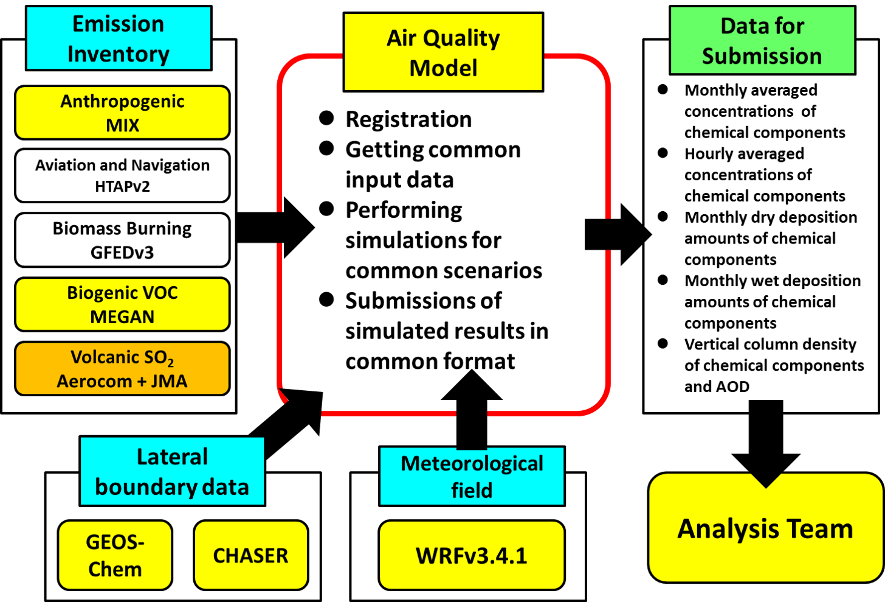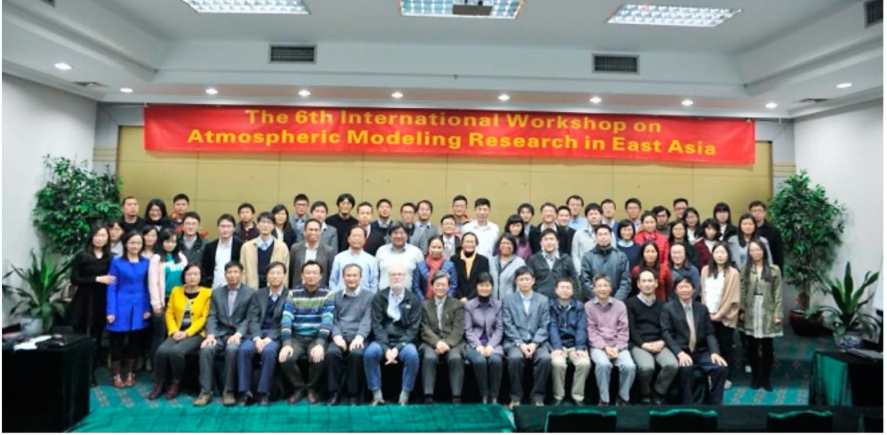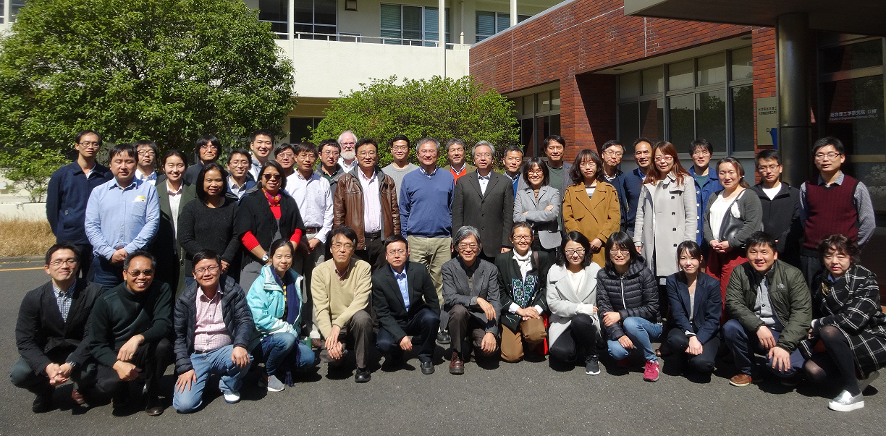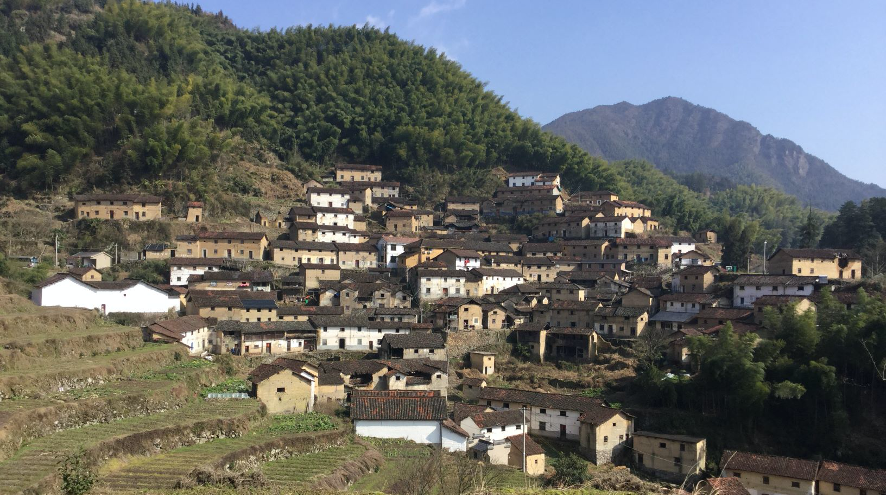Model Inter-Comparison Study for Asia (MICS-Asia) (2000- )
- Model Inter-Comparison Study for Asia (MICS-Asia) is a project aiming at improving air quality and climate models not only for enhancing scientific understanding of atmospheric environment but also for developing common scientific understanding for policy making in Asia.
- Special issue entitled “Regional assessment of air pollution and climate change over East and Southeast Asia: results from MICS-Asia Phase III” has been established and 25 papers were published by January 2021.
Introduction of MICS-Asia
- Air quality and climate models are effective scientific tools for understanding status of atmospheric environment and evaluating effects of mitigation measures. However, current modeling systems have problems not only in reproducibility of monitoring results, but also differences among simulated results by different models. Therefore, common understanding of current model performances and uncertainties in Asia and efforts to improve the modeling system are essential for utilizing models especially for international problems on air pollution and climate change.
- Under such backgrounds, MICS-Asia Phase I (1998-2000) for sulfur compound (Carmichael et al., 2002) and Phase II (2004-2009) including nitrogen compounds, ozone and aerosols were carried out as international initiatives of model inter-comparison study. The findings of the Phase II activities were published in Atmospheric Environment in 2008 (Carmichael and Ueda, 2008). The initiative was succeeded to MICS-Asia Phase III (2010-2020), where three scientific topics were classified: Topic 1. Inter-comparison of air quality model, Topic 2. Development of reliable emission inventories in Asia, and Topic 3. Model inter-comparison studies for air quality and climate change. In Phase III, an additional working group for Southeast Asia was also established. From 2021, MICS-Asia officially launched Phase IV.
Framework of MICS-Asia Phase III
- Figure 1 illustrates the basic framework of Topic 1 of Phase III. Basically, common modeling domains and input data were used by all participant models. The working groups of Topic 2 developed a new mosaic Asian anthropogenic emission inventory called the MIX inventory by combining up-to-date regional emission inventories (Li et al., 2017). The standard meteorological data sets were created by the WRF model. For the lateral boundary conditions, two types of data sets were provided from global models CHASER and GEOS-Chem for considering conveniences for settings of each participant model. In Topic 1, all participants performed the standard simulation for the year 2010 in domain for the whole Asian region. Fourteen models participated in the standard inter-comparison studies of air quality models and submitted simulation results. Based on them, analysis teams wrote scientific papers submitted to the Special Issue of MICS-Asia Phase III (see below).

- Figure 1. Framework of model inter-comparison procedures in Topic 1 of Phase III
- From Phase III, new studies that the inter-comparisons of multiple online coupled chemistry-meteorology models to investigate aerosol-weather-climate interactions were initiated as the major target of Topic 3. All participants were requested to simulate meteorology, air quality, radiative forcing and effects of aerosols over the Beijing-Tianjin-Hebei region of east China during two periods: January 2010 and January 2013. Currently in Topic 3, definitions of modeling domains were different among models and although common input emission data sets were used for all models, different models used different boundary conditions of meteorological fields and chemical compounds. These settings will be reconsidered in next steps.
Special Issue of MICS-Asia Phase III
- MICS-Asia Phase III established the special issue "Regional assessment of air pollution and climate change over East and Southeast Asia: results from MICS-Asia Phase III" in Atmospheric Chemistry and Physics, an interactive open-access journals of the European Geoscience Union. By January 2021, 25 scientific papers were published. In this section, overview papers for deposition, ozone, PM2.5, and air quality and climate change submitted to the special issue were introduced briefly. For details and other submitted papers, visit the special issue site: https://www.atmos-chem-phys.net/special_issue987.html.
- Itahashi et al. (2019) analyzed the simulated results of participant models focusing on deposition. Simulated results of wet deposition were analyzed and evaluated using ground observation data from the Acid Deposition Monitoring Network in East Asia (EANET). In general, models can capture the observed wet deposition over Asia, but underestimate the wet depositions of sulfate and ammonium ion and show large differences in the wet deposition of nitrate. For the ratio of wet deposition to the total deposition (the sum of dry and wet deposition), the wet deposition was generally dominant over Asia in all models. For the balance between deposition and anthropogenic emissions, excess of deposition, rather than of anthropogenic emissions, were found over Japan, North Asia, and Southeast Asia. These results indicate that the possibility of long-range transport within and outside Asia, as well as other emission sources. The simple ensemble and weighted ensemble approaches (weight is correlation coefficient between model and observation) were confirmed to be better way to improve the model performance, allowing the elimination of extreme performance. On the other hand, the precipitation-adjustment approach revealed a potential way to improve the simulation of wet deposition. Therefore, model performances for precipitation and related parameters such as water vapor mixing ratio should be refined as the key input data to chemical transport models.
- Li et al. (2019) analyzed the simulated results of participant models focusing on ozone. Most models captured the key patterns of monthly and diurnal variation of surface O3 and its precursors in the North China Plain and western Pacific Rim, but failed in the Pearl River Delta. A significant overestimation of surface O3 was found from May to September/October and from January to May over the North China Plain, the western Pacific Rim and the Pearl River Delta. Comparison with observation indicated that the considerable diversity in O3 photochemical production partly contributed to this overestimation and to high levels of inter-model variability in O3 for North China. The ensemble average of participants models did not always exhibit superior performance compared with certain individual models which suggests that the spread of ensemble-model values does not represent all of the uncertainties of O3 or that most MICS-Asia III models missed key processes. The ensemble average of models reproduced the vertical structure of O3 for the western Pacific, but overestimated O3 levels below 800hPa in the summer. For the industrialized Pearl River Delta, the ensemble average presented an overestimation of O3 levels for the lower troposphere and underestimations in the middle troposphere. Large inter-model variabilities of O3 were considered to be caused by the internal parameterizations of chemistry, dry deposition and vertical mixing of models, even though the native schemes in models are similar.
- Chen et al. (2019) analyzed the simulated results of participant models focusing on PM2.5. The multi-model ensemble mean showed better performance than most single-model predictions. A large variation in the ratios of sulfate, nitrate, and ammonium to PM2.5 is calculated among participant models. A more intense secondary formation of SO42- is simulated by CMAQ models, because of the higher sulfur oxidation ratio than other models. The nitric oxidation ratio calculated by all models has large values than the observations, indicating that overmuch NO3- is simulated by current models. NH3-limited condition (the mole ratio of ammonium to sulfate and nitrate is smaller than 1) can be successfully reproduced by all models, which indicates that a small reduction in ammonia may improve the air quality. A large coefficient variation is shown in simulated coarse particles. The poor consistency, especially over the arid and semi-arid regions, is mainly caused by dust aerosols, which means current chemical transport models have difficulty in reproducing similar dust emissions by using different dust schemes. Analyzing the ratios of each composition to PM2.5, NO3- is the major component in Beijing and Delhi, SO42- is the major one in Guangzhou, and similar contributions of SO42- and NO3- are calculated in Shanghai, Seoul, and Tokyo, which suggest that different air-pollution control plans should be taken in different cities.
- Gao et al. (2019) analyzed the simulated results of participant models focusing on aerosol radiative effects and aerosol feedbacks. Main features of the accumulation of air pollutants are generally well represented by participant models, while large differences in the models were found in the predicted PM2.5 chemical compositions. These inconsistencies would lead to differences in estimated aerosol direct radiative forcing (ADRF) and aerosol feedbacks. The spatial distributions of ADRF at the surface and inside the atmosphere inferred from multiple models are generally consistent, but the spatial distributions of ADRF at the top of the atmosphere (TOA) estimated by these models greatly differ. Over the Beijing–Tianjin–Hebei (BTH) region, the ensemble mean of ADRF at the TOA, inside the atmosphere, and at the surface are −1.1, 7.7, and −8.8 W m−2, respectively. Subdivisions of direct and indirect aerosol radiative forcing confirm the dominant roles of direct forcing. During severe haze days (17–19 January 2010), the averaged reduction in near-surface temperature for the BTH region can reach 0.3–1.6 degree centigrade. The responses of wind speeds at 10 m above the ground inferred from different models show consistent declines in eastern China. For the BTH region, aerosol–radiation feedback-induced daytime changes in PM2.5 concentrations ranging from 6.0 to 12.9 µg m-3 (<6 %) during severe haze days. Sensitivity simulations indicate the important effect of aerosol mixing states on the estimates of ADRF and aerosol feedbacks.
The International Workshop on Atmospheric Modeling Research in East Asia
- MICS-Asia Phase III was launched in 2010 from the First International Workshop on Atmospheric Modeling in East Asia held at Dalian, China. Since then, the workshops were held every year to develop work plan, report progresses and discuss next steps of MICS-Asia activities (see Table 1 and Fig. 2). At the workshop, sessions for research presentations related to monitoring, emission inventory and modeling studies were also conducted for exchanging information and opinions. After the workshop, visits to local observation sites were occasionally organized. Figure 3 shows a photo of the candidate site of the atmospheric observation station in Jinhua City, Zhejiang Province. The site is located in a village with a population of about 500 people and is classified as a background site because there are no large-scale emission sources in the vicinity. This site is located at the southern end of the Yangtze River Delta, and it is expected to be able to observe the air pollution situation in the area.
- Activities of MICS-Asia are based on voluntary efforts and cooperation of a lot of researchers.The workshops of MICS-Asia Phase III were organized and funded by Joint International Center on Air Quality Modeling Studies (JICAM), which was jointly established by ACAP and Institute of Atmospheric Physics/Chinese Academy of Sciences (IAP/CAS). Parts of MICS-Asia Phase III activities were financially supported by EANET additional budgets.
- Table1. Venues, periods, and the number of participants of the International Workshop on Atmospheric Modeling Research in East Asia



- Figure 2. Group photos of the International Workshop on Atmospheric Modeling Research in East Asia (Upper: February, 2015, Zhuhai, China; Lower: March, 2018, Fukuoka, Japan)

- Figure 3. Visit to the candidate site of the atmospheric observation station (Jinhua city, Zhejiang province)
The papers on this study are as follows:
- Carmichael, G. R. et al. 2002. The MICS-Asia study: model intercomparison of long-range transport and sulfur deposition in East Asia.
Atmospheric Environment, 36: 175-199.
https://doi.org/10.1016/S1352-2310(01)00448-4 - Carmichael, G. R. and Ueda, H. 2008. MICS-Asia II: The model intercomparison study for Asia Phase II.
Atmospheric Environment, 42: 3465-3467.
href="https://doi.org/10.1016/j.atmosenv.2007.10.003">https://doi.org/10.1016/j.atmosenv.2007.10.003 - Li, M. et al. 2017. MIX: a mosaic Asian anthropogenic emission inventory under the international collaboration framework of the MICS-Asia and HTAP.
Atmospheric Chemistry and Physics, 17: 935-963
https://doi.org/10.5194/acp-17-935-2017 - Itahashi, S. et al. 2020. MICS-Asia III: overview of model intercomparison and evaluation of acid deposition over Asia.
Atmospheric Chemistry and Physics, 20: 2667-2693
https://doi.org/10.5194/acp-20-2667-2020 - Li, J. et al., 2019. Model evaluation and intercomparison of surface-level ozone and relevant species in East Asia in the context of MICS-Asia Phase III – Part 1: Overview.
Atmospheric Chemistry and Physics, 19: 12993-13015
https://doi.org/10.5194/acp-19-12993-2019 - Chen, L. et al., 2019. MICS-Asia III: multi-model comparison and evaluation of aerosol over East Asia.
Atmospheric Chemistry and Physics, 19: 11911-11937
https://doi.org/10.5194/acp-19-11911-2019 - Gao, M., et al. 2020. Air quality and climate change, Topic 3 of the Model Inter-Comparison Study for Asia Phase III (MICS-Asia III) – Part 2: aerosol radiative effects and aerosol feedbacks.
Atmospheric Chemistry and Physics, 20: 1147-1161
https://doi.org/10.5194/acp-20-1147-2020